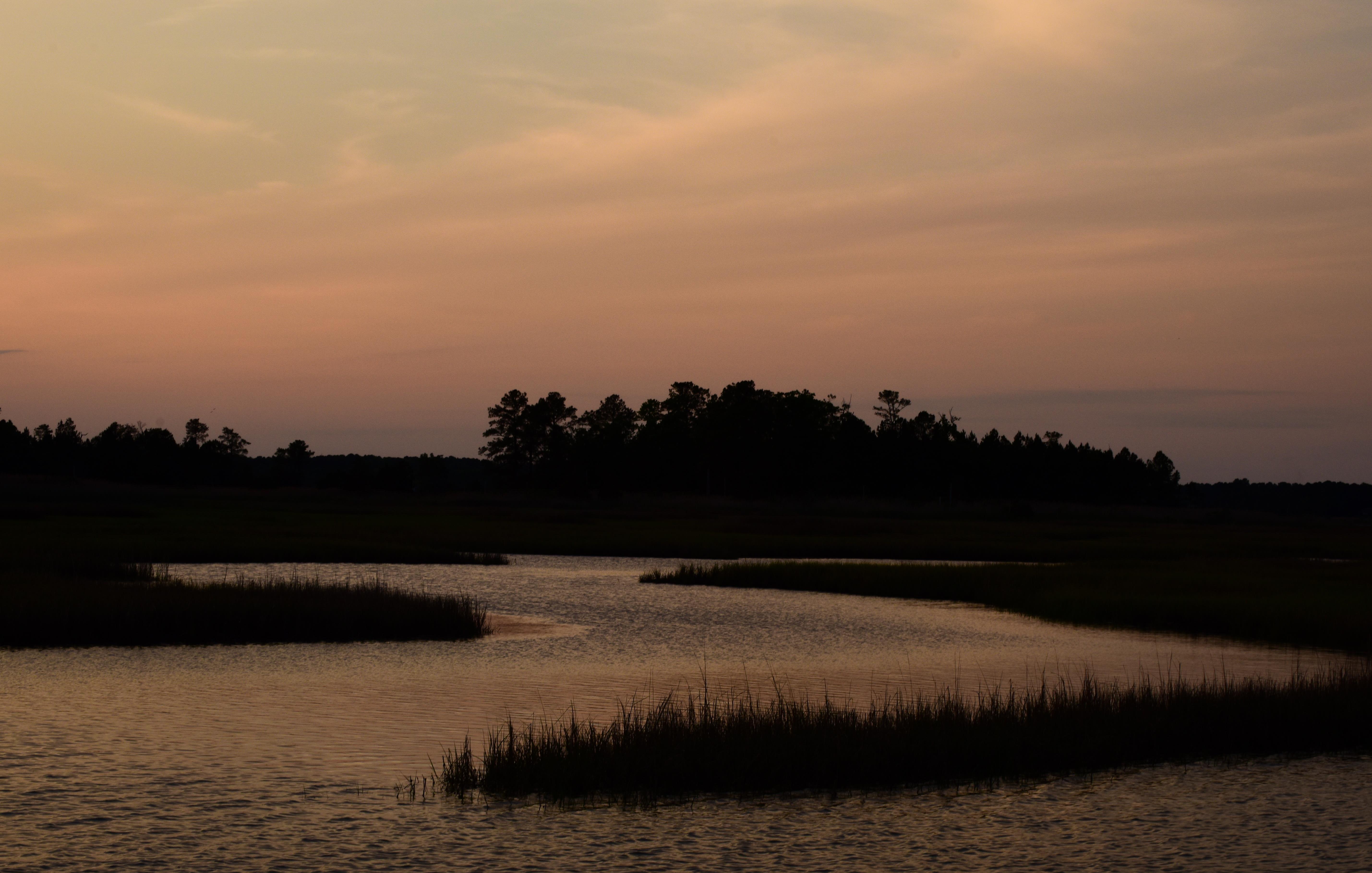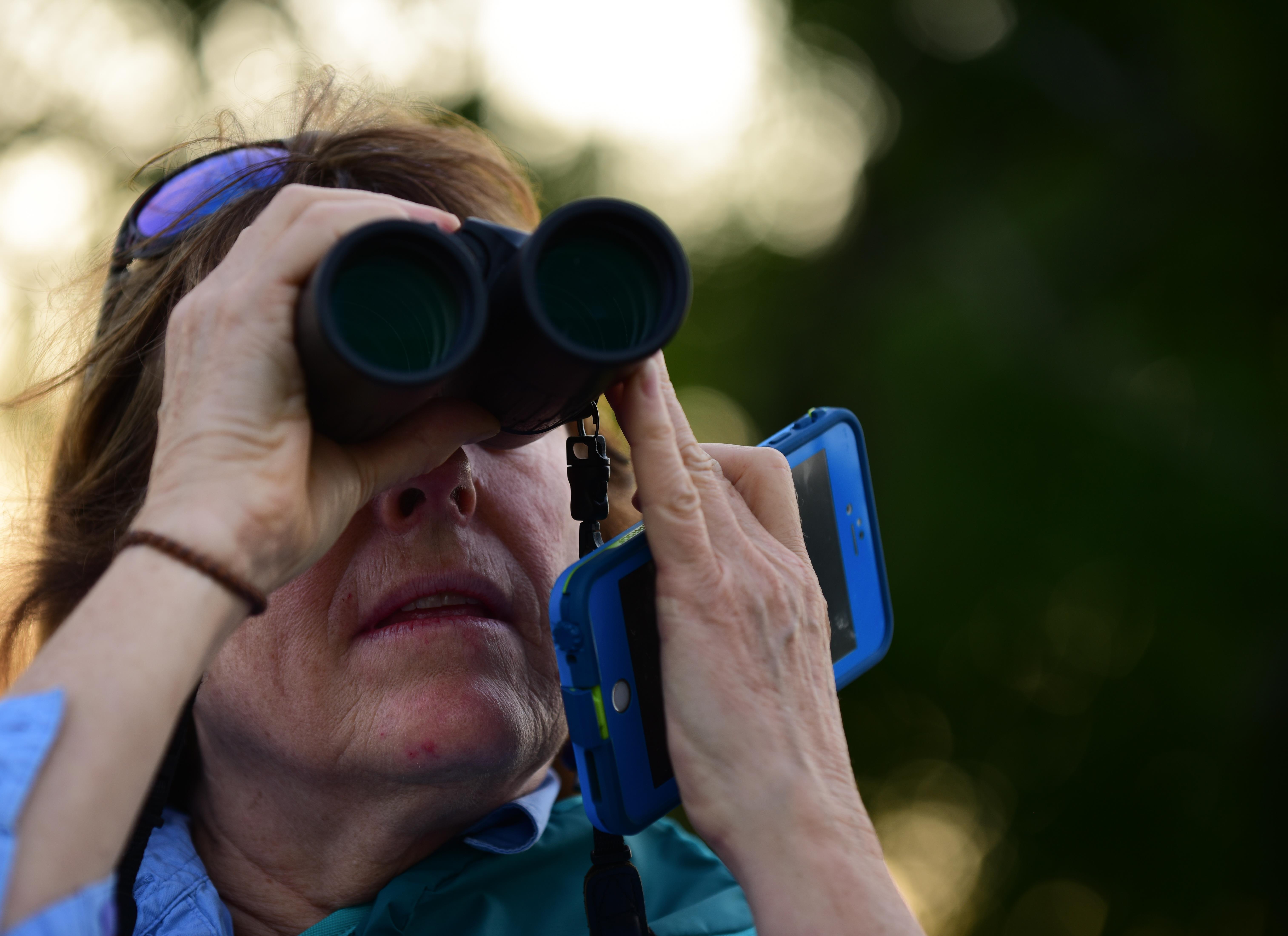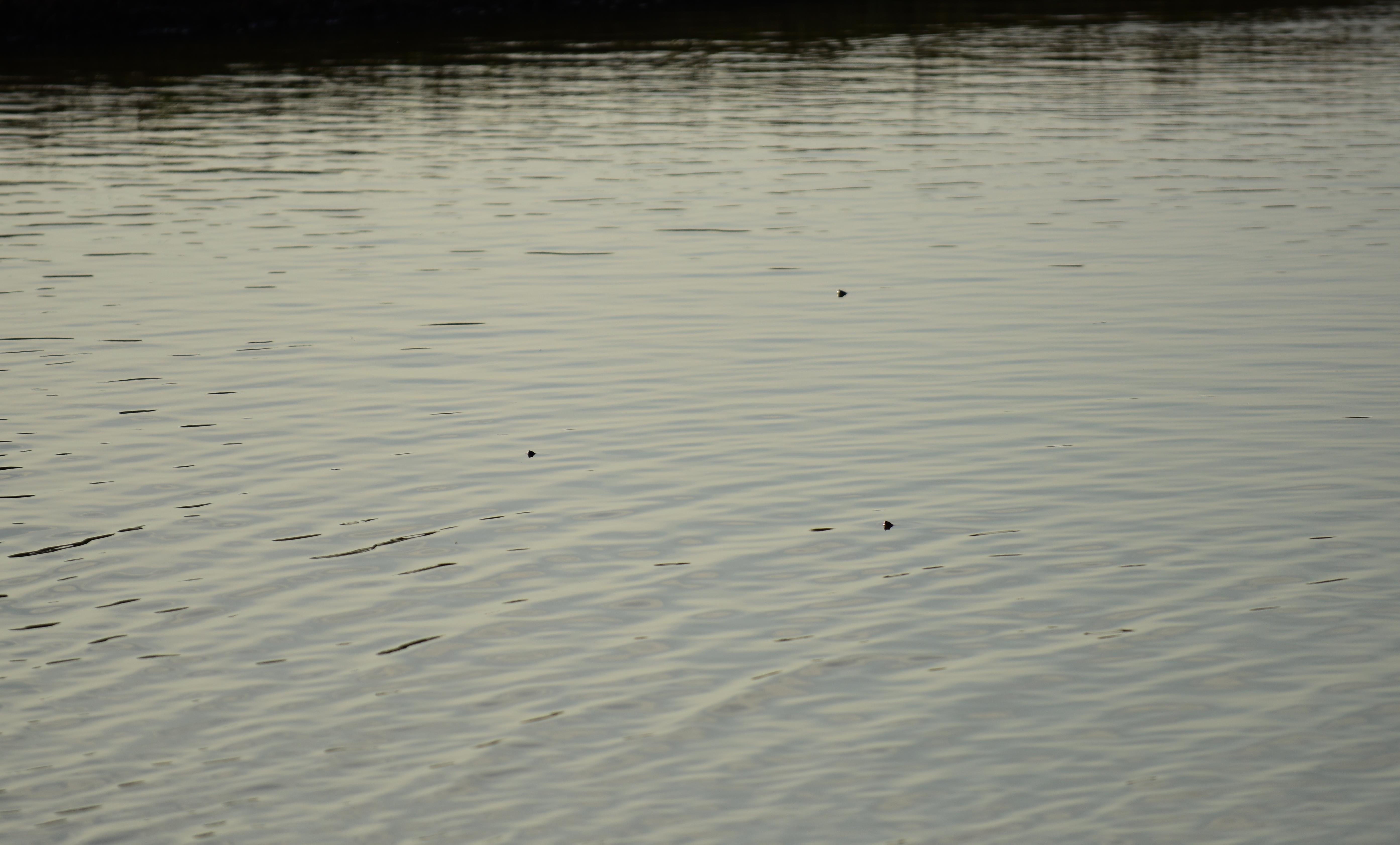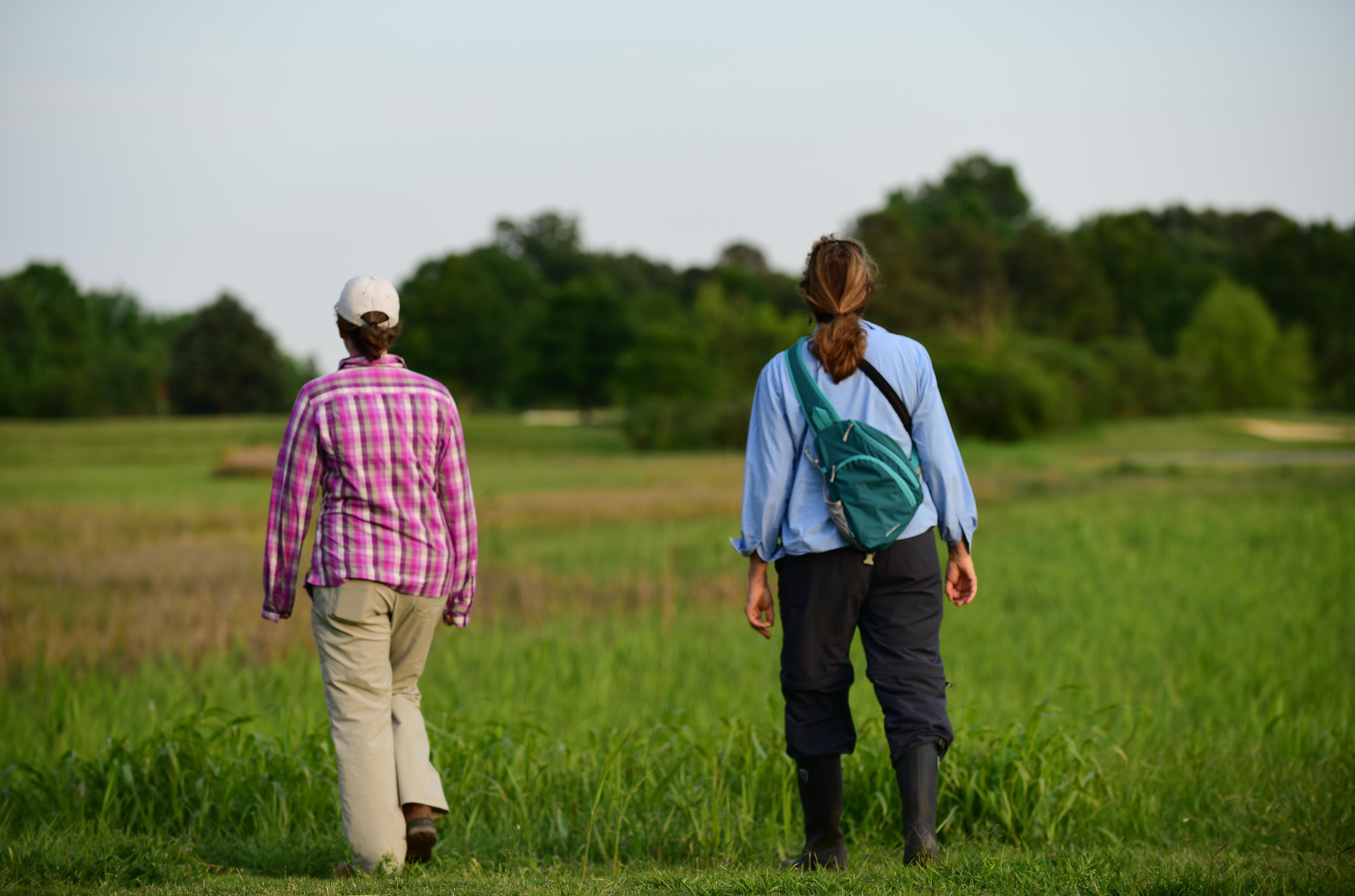JOINT BASE LANGLEY-EUSTIS, Va. –
"This area is perfect,” said Karen Terwilliger, a local environmental expert, as she pointed to a part of Langley Air Force Base’s shoreline that provides, not only a natural flood barrier, but a safe area for the Diamondback Terrapin Turtle, a declining species being surveyed at Langley AFB, to lay its eggs.
According to Alicia Garcia, Colorado State University natural resource program manager for Langley AFB, surveys like the turtle survey are part of Department of Defense-wide plans and practices meant to increase the potential of preserving, and where possible enhancing, natural environments on federal lands.
“Because of those plans and regulations in place, military installations are often times last refuges for rare and endangered species,” said Garcia.
The turtle study is a part of multiple yearlong surveys conducted by the Langley Environmental team in partnership with local wildlife and environmental experts. As the base and local team trudges through thousands of miles of the installation’s tall grasses, mud and shores, they look for ways to improve the livelihood of native species without impacting military operations.

“Military bases have a lot of protected land throughout the country—they form a really neat network,” said Terwilliger. “Obviously military missions come first, but oftentimes missions are compatible with wildlife, forestry and natural resource management.”


An example of this harmony lies in flood mitigation projects. Most notably, the shoreline restoration projects mimic natural occurrences that deter flood waters from infiltrating the base’s infrastructure while providing a habitat for native species including the terrapin. The turtle’s preferred habitat of brackish marshes lies on Langley AFB, making its restored shores a prime nesting place for the turtles to reproduce.
We are trying to improve the quality of our shoreline by mimicking natural processes where we can,” said Garcia. “This is something JBLE-Langley realized would have a direct benefit for us as far as preserving the infrastructure and increasing the storm resiliency, as well as the quality of the natural environment.”

As to date, Langley AFB has restored 3,000 linear feet of its shoreline and plans to restore an additional 329 feet this year, providing natural flood prevention, and an added benefit of more area for the terrapins to lay eggs.
With the shoreline restoration efforts, our goals are to improve that infrastructure and increase resiliency of the base to major storms. Where possible, we want to restore areas for rare species, or declined species like the Diamondback Terrapin,” said Garcia. “There’s no (negative impact) from having some turtles on the coastline with our flight operations. If we can increase the quality of their habitat while protecting the infrastructure it’s a win, win.”


After driving and walking to different areas of the shoreline, Terwilliger added that putting up turtle crossing signs would aid in the terrapin’s and perhaps other creatures survivability as drivers running turtles over is their main cause of death.
Garcia notes that the community may notice another preventative measure -- mitigating invasive vegetation. This vegetation degrades the habitat for all species as it steals resources from native plants that provide better nutrients for animals and insects.
“We’re treating for those this fall and it will improve safety by increasing visibility in training areas, and it will also enhance the natural areas,” said Garcia. “If people see that it looks kind of ugly for just a little bit in the fall, if they can just be patient in the long run it will be better for the area.”

While Langley’s environmental team continues their efforts to preserve the installation’s natural habitats, they ask that the base community do their part as well by:
• Paying attention to animals crossing the road especially near the coast
• Not letting plastic materials into the environment; recycle or dispose as needed
• Keeping water in the area clean of debris
• Cleaning up pet waste as when it enters waterways it increases E.coli levels
For more information about Langley environmental efforts, visit http://www.jble.af.mil/Units/Air-Force/Langley-Environmental/.